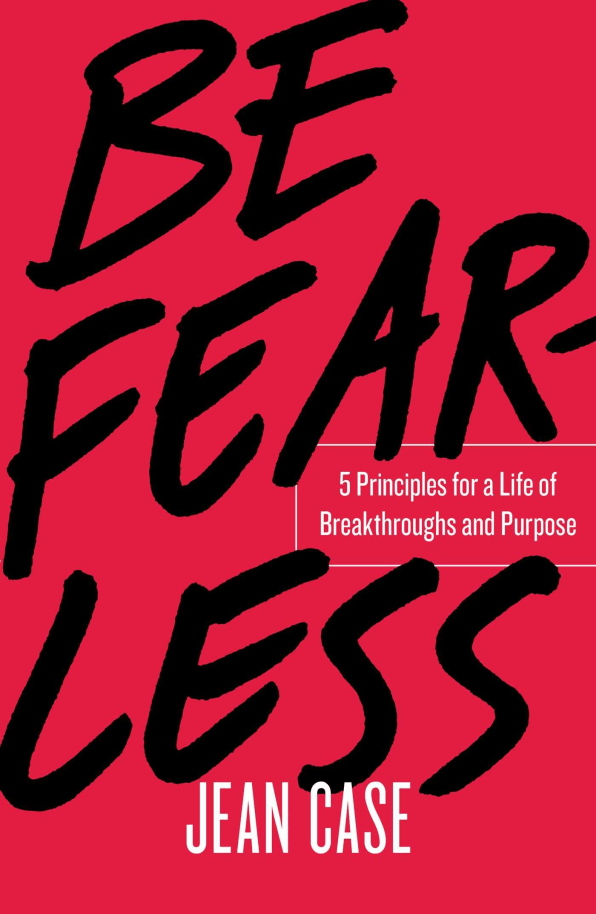Coming clean on a painful failure allowed me to move on from it
My heart still skips a beat or two when I talk about my failures. I’m not being glib. Falling into self-doubt, recrimination, and even despair is easy. Everyone has felt these emotions at some point. It’s what happens next that defines what we make of the experience. While not all failures have a happy ending, most happy endings have a failure story.
If you examine the life of anyone who has achieved something extraordinary, you’ll find a story of failure somewhere along the way. Sometimes you really have to look for it, because too often people advance through life and sanitize their stories, making it sound like they planned everything carefully.
The inevitability of failure
We all face personal failures, whether in marriage, in relationships, or social situations. However, professional shortcomings tend to come with greater public scrutiny. I know this from experience. When I encountered one of the most challenging failures of my career, I knew that I had a choice to make: I could try to sweep it under the rug, sugarcoat it, or come clean.
The program in question, PlayPumps, was one of the most ambitious and exciting initiatives launched at the Case Foundation. Our goal was to bring clean drinking water to ten sub-Saharan countries and hundreds of villages. We loved the technology–a way to generate clean wells by using children’s merry-go-rounds to pump the water. Think of the merry-go-round as a windmill on its side. We knew people need clean water, and that children love to play. It seemed like a win-win.
When we first discovered the technology and saw the business model for its deployment, we believed it had enormous potential. We jumped in to help create PlayPumps International–the US as a fund-raising and marketing organization to support the initiative. We launched the effort with great fanfare at the 2006 Clinton Global Initiative, with First Lady Laura Bush on one side of me and former President Bill Clinton on the other. Also onstage with me were my husband, Steve, and fellow philanthropist Ray Chambers (now the UN Secretary General’s Special Envoy for Health).
There was a lot of early excitement about this new technology. Dozens of partners joined us in supporting the effort. There were some hiccups early on, but we patiently worked with partners on the ground to get things right, and we felt good about the progress.
But as the years passed, questions continued to pop up, and we realized that the program wasn’t meeting the high standards it required. Our team spent a year trying to address some of the shortcomings so we could get the initiative back on track. Eventually, we came to realize that we couldn’t assure the scale or quality of the program on the ground.
We had a hard three choices. One was to continue on a path that growing evidence suggested was unwise. A second was to pull the plug and invest the time and capital elsewhere. And the third option was to take a step back, regroup, and attempt to go forward in a new and more effective way.
We decided that the third option was the right way to go. After all, our belief that clean water is one of the great causes of our time hadn’t changed. But we had to acknowledge that there were likely better ways to advance this cause. In May 2009, our board made the courageous decision to take a new course.
On accepting failure and facing the lessons head-on
I remember sitting around the board table, discussing how to make the announcement. We have glass walls at the Case Foundation, and everyone who looked in at us could see our dismay. It was excruciating because, in nonprofit work, people don’t want to talk about failure. We discussed backing out quietly, in the hope that perhaps the failure would escape public scrutiny. But in the end, we knew we had to own the fact that the opportunity had turned into a challenge we couldn’t meet. We hoped that by acknowledging our shortcomings, we could share lessons that might allow us and others to try new approaches that could work better.
With my heart in my throat, I decided to make the most public pronouncement possible–to name the failure in a written piece, which I titled “The Painful Acknowledgment of Coming Up Short.” After I finished writing it, I had a moment of fear as I recognized what a big step it was to announce to the universe, “We failed!”
I was terrified to hit the send button, but I couldn’t have predicted the phone calls and emails that followed. People across the field thanked me for owning up to the failure in such a public way, and for revealing just how hard it is to get it right when you take on thorny challenges.

A new suggestion emerged from some of the respondents–the creation of a “safe table” for partners to come together to talk about their failures so that they can share their learnings. The idea took hold, and some of the early meetings became large gatherings. They were “fail fests” where we openly recognized that in trying to innovate and solve big problems, we wouldn’t always get it right. They represented a commitment to make failure matter by allowing others to learn from our mistakes.
We also changed the way we assessed the outcomes of our work at the Case Foundation, instituting a green, yellow, and red assessment scale. Green indicates that things are humming along, and yellow shows that we need to make adjustments. Red flags signal an effort that may fail.
On one annual review when I saw no reds, I was concerned. I had a frank discussion with the team, pointing out that if we didn’t see at least some reds in our portfolio, we weren’t bold enough. We at the Case Foundation dislike failure as much as anyone, but we know that if we chase extraordinary outcomes, we must take risks. No one gets fired or docked for key results that fall short if we are doing our part. Instead, there is a reward for going above and beyond to make big bets, take risks, and build unlikely partnerships.
How to fail forward
Sometimes pivoting off a failure means helping others win where we have failed. After we discontinued our support for PlayPumps, we created a new partnership with Water For People, which added PlayPumps as part of a broader portfolio of solutions from which rural African communities could choose. It’s a process that philanthropy expert Lucy Bernholz has described as “failing forward.”
Since the work of the social sector often directly impacts people, and nonprofits are highly reliant on donor support, there tends to be less tolerance for mistakes, which leads many organizations to become risk-averse, and to hide errors. But when nonprofits aren’t transparent about their failures, they deprive others of necessary lessons. Making failure matter is also crucial for the private sector. Look at any great business today, and chances are, their road to success included low moments that required fresh thinking and essential course corrections.
Do I like failures? I detest them. The point isn’t to glorify failure or to use it as an excuse, but rather to acknowledge that achievements usually follow it. So if it happens, let it teach you, and then allow the experience of overcoming it to energize you and lead to success. Failure only becomes something positive when you take the lessons and turn them into action.
This article is adapted from Be Fearless: 5 Principles For A Life Of Breakthroughs And Purpose. It is reprinted with permission from Simon & Schuster.
(21)



